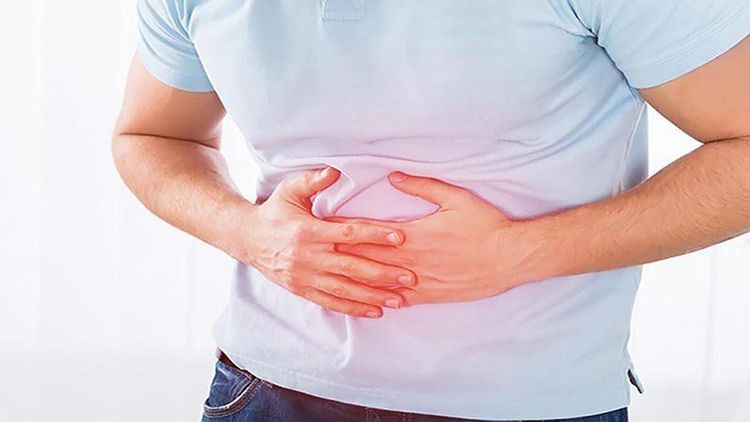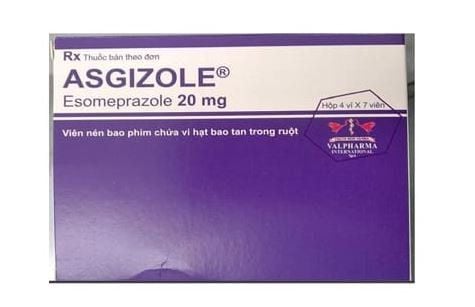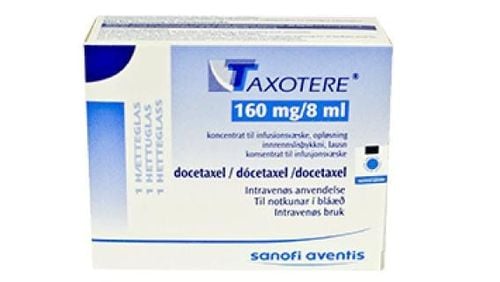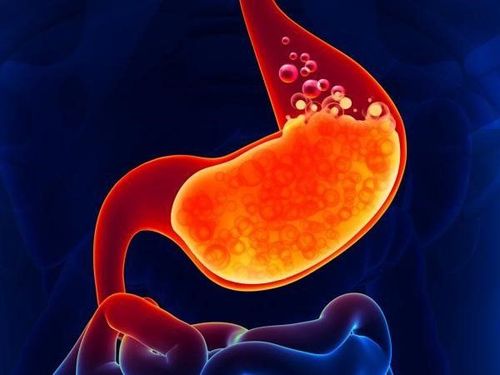This is an automatically translated article.
Post by Master, Doctor Mai Vien Phuong - Head of Department of Gastrointestinal Endoscopy - Department of Medical Examination & Internal Medicine - Vinmec Central Park International General Hospital
Gastroparesis is a disease caused by delayed gastric emptying (GE), affecting about 10 million people in the United States. Diabetic and postoperative gastroparesis are complementary disorders, but the majority of patients with gastroparesis have no identifiable etiology and are considered idiopathic. Although post-infectious causes have been implicated in idiopathic gastroparesis, the pathophysiology of idiopathic gastroparesis remains unclear.
1. How to diagnose idiopathic gastroparesis - Diagnostic criteria for gastric emptying
Classification of severity of delayed gastric emptying, adopted from the consensus paper of the Joint Report of the Nuclear Medicine Association and the American Society for Neuroscience and Gastroenterology, based on the hundred to stay in the stomach after 4 hours. The following classification system has been proposed: category 1 (mild): 11-20% maintained at 4 hours; Grade 2 (medium): 21-35% retention at 4 hours; grade 3 (severe): 36-50% maintained at 4 hours; and grade 4 (very severe): > 50% maintained at 4 hours.
A recent study by the NIDDK research organization gastroparesis found that the severity of gastric retention was significantly correlated with the severity of symptoms when more than 35% of gastric retention was present. again after 4 hours. This correlation was not significant in a large number of patients with a retention rate of 11-34%.
To address the criteria for normal gastric emptying (since the original "egg meal" dates back to 20 years), experts recently studied the extent of gastric emptying in 25 healthy individuals from 30 to 70 years old, both men and women, with an even distribution for each decade. Four-hour maintenance values of up to 17% can be observed in asymptomatic healthy volunteers. Therefore, when interpreting the current “gold standard” meal for gastric emptying, experts recommend that a gastric retention > 15% after 4 h should be considered the appropriate criterion for applying the diagnosis. diagnose “gastroparesis” rather than the currently used >10% criterion. Therefore, the term "idiopathic" gastroparesis should be applied with stricter gastric emptying criteria. Patients with postprandial discomfort and normal gastric emptying are generally considered to have functional dyspepsia (FD). More attention is being paid to the role of reduced basal accommodation and rapid lactation in explaining symptoms of early satiety, fullness, colic, and nausea, which may predominate in some women. number of patients, classified as having FD.

2. Pharmacological explanation for delayed effect of gastric emptying
Cannabinol has been shown to delay gastric emptying in previous studies. In the first study investigating the effects of delta-9-tetrahydrocannabinol (THC) on gastric emptying, smoking THC was shown to significantly delay gastric emptying compared with placebo in human volunteers. normal has achieved "high" symptoms. Mean retention was significantly higher in the THC group compared with placebo at all time points from 30 minutes to 2 hours after the test meal. Long-term marijuana use has been linked to the newly recognized cannabis-induced nausea syndrome, and patients may be misdiagnosed as having gastroparesis because of vomiting. More recently, recreational use of marijuana has been approved in many states. It is important to take a careful history and to discontinue all marijuana use at least 72 hours before gastric emptying is studied.
3. Effects of drugs on gastric emptying
There are many drugs that can slow gastric emptying. In this article, experts will highlight the most common drugs.
Opioids are the most common drugs that cause delayed gastric emptying. A randomized controlled trial evaluating 75 mg of Tapentadol immediate-release (IR) TID or 5 mg of Oxycodone IR TID versus placebo showed a significant delay in gastric emptying with narcotics compared with placebo. Drugs used to control hyperglycemia in patients with type 2 diabetes include pramlintide, an amylin analog, and Exenatide, a GLP-1 agonist, which has been associated with delayed gastric emptying due to inhibition of gastric emptying. vagal capacity.
Proton pump inhibitors may slightly delay gastric emptying to solids by impairing gastric acid-dependent activity, interfering with denaturation of ingested food.

4. Infectious causes for idiopathic gastroparesis
There are many factors identified as being involved, of which infectious factor has been identified. Post-infectious gastroparesis hypothesis
Post-infectious gastroparesis has been reported in both children and adults and it is associated with various pathogens. The pathophysiology of postinfectious gastroparesis can be either neurologic or myopathy. The proposed mechanism is believed to be inflammation, an immune-mediated phenomenon, or an exacerbation or manifestation of an underlying movement disorder. There is also documented evidence of possible viral damage to the ICC.
Viral pathogens are associated with idiopathic gastroparesis
In the pediatric literature, reports have linked rotavirus to idiopathic gastroparesis . Two case series reported that among rotavirus-positive, postviral gastroparesis children, all fully recovered to gastric emptying in 6-24 months.
Cytomegalovirus (CMV) and Epstein-Barr virus (EBV) have been associated with gastroparesis. In a study of 143 adult patients with idiopathic gastroparesis, 11 patients were identified with a postviral etiology, of which 4 had antibody titers against CMV and 2 against EBV, while the remaining 5 had clinical history and presentation consistent with viral etiology based on disease consistent with gastroenteritis. Seven patients (aged three months to 47 years) with a viral history prior to the development of gastroparesis revealed CMV and EBV as the culprits in two cases. CMV has also been associated with gastroparesis in an immunosuppressed patient who developed neurological symptoms and delayed gastric emptying with CMV-positive confirmatory CSF PCR. This patient subsequently improved clinically with ganciclovir.
Enterovirus (EV) is thought to be a possible cause of idiopathic gastroparesis. 17 adult patients reported flu-like symptoms or gastroenteritis prior to diagnosis of idiopathic gastroparesis, and 11 subjects underwent immunoperoxidase staining for EV on gastric mucosal biopsies. Nine patients had active EV infection as documented on endoscopic gastric biopsies and eight patients received antiretroviral therapy and/or immunotherapy. Four out of eight patients treated showed improvement in symptoms.
Among other viral etiologies, Norwalk virus and Hawaiian virus are associated with idiopathic gastroparesis in 50% of patients thought to be affected by the virus. Varicella-Zoster has also been associated with idiopathic gastroparesis in the case of a 52-year-old male with Ramsay-Hunt syndrome who developed gastroparesis and improved symptoms with metoclopramide.
A study at the Mayo Clinic identified seven cases of idiopathic gastroparesis out of 103 cases of gastroenteritis. Among the seven cases (three men, four women), the mean age was 26.9 years, and the symptoms experienced before the onset of gastroparesis included low-grade fever, fatigue, and myalgias with or without diarrhea. run. A median follow-up of 32.3 months showed complete resolution of the symptoms of gastroparesis in five of the seven subjects while the remaining two subjects had significant improvement in symptoms indicating that the posterior gastroparesis Infection seems to have a good prognosis. There are no articles that specify the causative agent, but it is thought to be viral according to clinical presentation.
The diagnosis of idiopathic gastroparesis must be made rigorously, with particular attention to the interpretation of the scintigraphic gastric emptying study, where the abnormality must be > 15% maintained at 4 h, not current > 10%. Drugs, especially opioids, are one of the key factors to consider when interpreting a gastric emptying study. In the future, diagnostic approaches will benefit from nonsurgical removal of gastric smooth muscle tissue for enteric nerve cell examination, and ICC, which will be achieved by endoscopic ultrasound-guided biopsy of the muscle. stomach slippery.
Please dial HOTLINE for more information or register for an appointment HERE. Download MyVinmec app to make appointments faster and to manage your bookings easily.
References
Danny j. avalos, et al. Understanding the etiology and spectrum of idiopathic gastroparesis. Gastrointestinal motility and functional bowel disorders, series
22. april 2017 • volume xli, issue 4














